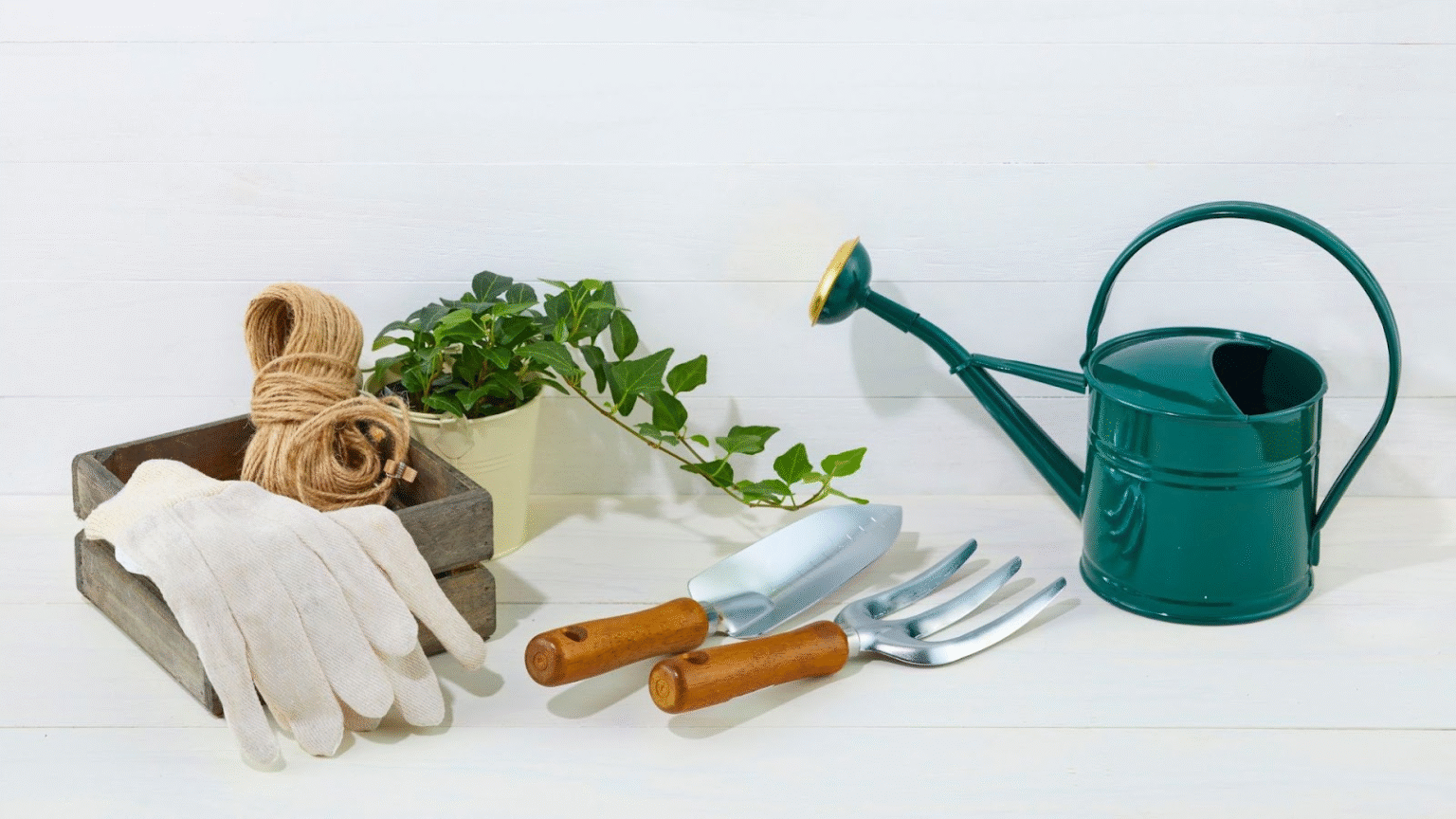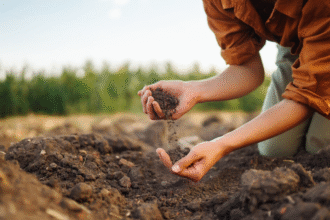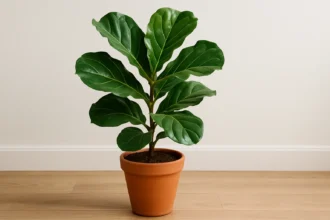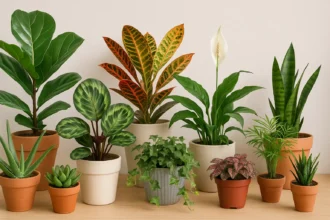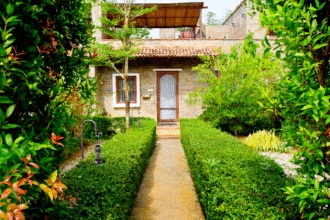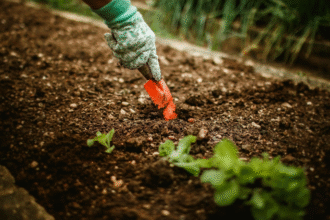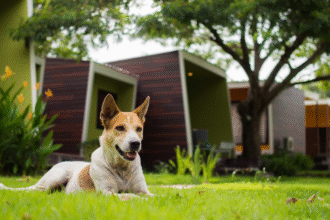You see a garden growing and life but, preparing soil and planting is only half the work. So the Other half is the watering, weeding and nurturing. This is a big part of the work and if done wrong, half the efforts of preparing the soil and planting goes waste. So if you are asking yourself what gardening tools do beginners need, this guide will walk you through the most helpful ones and explain why they matter.
What Gardening Tools Do Beginners Need – Complete List
1. Hand Trowel
A hand trowel is one of the first tools you will use in the garden. It is small, light, and easy to hold. You can rely on it for planting flowers or herbs, digging small holes, or moving soil. Every beginner should have one because it turns simple tasks into quick wins. Without a trowel, even planting one seedling feels slow.
2. Pruning Shears
Plants grow fast and often need shaping. Dead stems or damaged leaves also need to go. That is where pruning shears help. They cut cleanly and protect the plant from rough tears. You will use them on flowers, shrubs, or even vegetables. This tool also helps you guide the shape of your plants so your garden always looks neat.
3. Garden Gloves
If gloves are not worn, the pain endured while gardening is far more. Sore and worn, wet hands add to the annoyance of unlocking the ailments of gardening. Often, slight scratches and pricks on fingertips do not aid much to make the pain bearable. This means blisters, cuts and scratches are harsh. And keeping in mind the benefits, having tools of gardening is a far more satisfactory and useful method than struggling.
4. Watering Can or Hose with Nozzle
Plants cannot thrive without proper water. Beginners often use whatever container they have, but that does not provide control. A watering can or a hose with a nozzle allows you to direct the water where it matters most. You can water gently without drowning young roots. This tool helps your plants stay strong through every season.
5. Garden Fork
Soil can get packed hard, which makes it tough for roots to grow. A garden fork loosens that soil and creates better airflow. It also helps you mix compost or turn over garden beds. Unlike a shovel, the fork’s prongs cut through clumps with less effort. For small gardens, it is a tool that pays off every time you prepare new soil.
6. Rake
Leaves, twigs, and random debris often cover the ground. A rake clears all that so you have space to plant or just keep the garden tidy. It also levels soil after planting seeds. Without one, cleaning becomes slow and uneven. A rake might look simple, yet it gives you order and balance in your garden space.
7. Garden Hoe
Weeds compete with your plants for food and water. A garden hoe helps you remove them quickly. It also breaks the soil surface and prepares planting beds. Beginners often feel frustrated when weeds take over. With a hoe, you can stay ahead of them and keep your plants safe. It is one of the strongest tools for long-term success.
8. Wheelbarrow or Garden Cart
What gardening tools do beginners need? At some point you will need to move soil, compost, or even heavy pots. Carrying them by hand feels exhausting. A wheelbarrow or cart saves you time and strength. You can move large loads in one trip instead of many. Every garden, even a small one, feels more manageable with this tool. This is one of the must-have tools for new gardeners because it reduces effort and helps you work smarter.
9. Soil Knife or Weeder
Weeds grow deep and sometimes pull nutrients from your plants. A soil knife or a weeder helps you dig them out without damaging roots. It is sharp, slim, and precise. You can also use it for digging small holes or cutting through tough soil. For beginners, this tool keeps control over unwanted growth and protects your garden’s health.
10. Water-Resistant Storage Bucket or Tool Bag
With many tools, you need a place to keep them safe and ready. A sturdy bucket or tool bag does the job. You can carry all your essentials at once and avoid misplacing them. Good storage also keeps your tools dry and in shape for longer use. Every beginner benefits from this because it saves time searching for lost tools. This fits well under basic gardening supplies and should not be overlooked.
Another Good Read: How to Clean a Coffee Maker Without Vinegar (Because Swamp Water Coffee Isn’t It)
Tips for Choosing Quality Gardening Tools
What gardening tools do beginners need? Certainly, not every tool is equally effective. Pick tools with handles that will be comfortable in your grip because, after all, you will be using them. Go with stainless steel or carbon steel, since both materials will last longer and resist rust better. Do not buy all of them at once. Stick with the basics and add more in the future as you develop new skills. This way, not only do you learn to appreciate each tool by the time you finish your garden, you also appreciate your garden more.
Conclusion
In a nutshell, what gardening tools do beginners need? This is a question with obviously a pretty easy answer. The core tools are a hand trowel, pruning shears, gloves, watering can, and the more construction-oriented fork, rake, hoe, and wheelbarrow, along with the soil knife and the storage bag. Each of these tools that we’ve mentioned, with the help of the others, will enhance the effectiveness and ease of your gardening endeavors. Start with these, and only add more as your garden starts to grow. Care for the tools as you care for your garden, as the joy of gardening is as much in the love you give as in the love you receive. Go slow and enjoy the journey.

